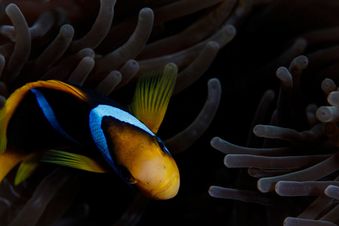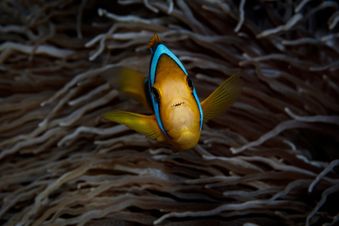Scaring Nemo ‐ Contrasting Effects of Observer Presence on Two Anemonefish Species
- Description:
- Behaviours of Clark's anemonefish Amphiprion clarkii and the dusky anemonefish Amphiprion melanopus were studied in Vanuatu. Six anemones and their resident fish were observed for typical behaviours (hiding, watching, roaming, inter-, and intraspecific behaviour) with and without the presence of a snorkelling observer. Observer presence had significant but contrasting effects on hiding behaviou...
- Display date:
- 2020
- Location:
- Vanuatu
- Format:
- Journal article
- Collections:
- Tuwhera
- Publisher:
- Wiley
- Content partner:
- Auckland University of Technology
- Availability:
- Not specified
-
Copyright status: ShareFind out more about what you are able to do with this itemMore informationAuckland University of Technology has this to say about the rights status of this item:
© 2020 The Authors. Journal of Fish Biology published by John Wiley & Sons Ltd on behalf of Fisheries Society of the British Isles. This is an open access article under the terms of the Creative Commons Attribution License, which permits use, distribution and reproduction in any medium, provided the original work is properly cited.
What can I do with this item?Non-infringing useNZ copyright law does not prevent every use of a copyright work, and this item may be hosted by an international institute or organisation. You should consider what you can and cannot do with a copyright work.Share itThis item is suitable for copying and sharing with others, without further permission.Check before modifyingYou'll need to confirm with the copyright holder before modifying, remixing, or building upon this item.Check about commercial useYou'll need to confirm with the copyright holder using this item for commercial purposes.
Related items
Welcome and warm Pasifik greetings
The information on this site has been gathered from our content partners.
The names, terms, and labels that we present on the site may contain images or voices of deceased persons and may also reflect the bias, norms, and perspective of the period of time in which they were created. We accept that these may not be appropriate today.
If you have any concerns or questions about an item, please contact us.

